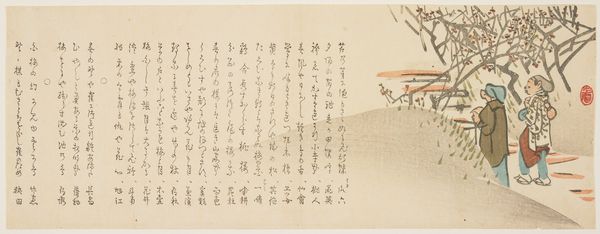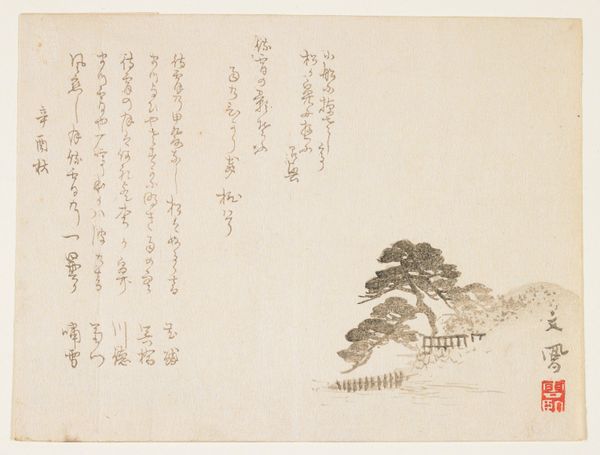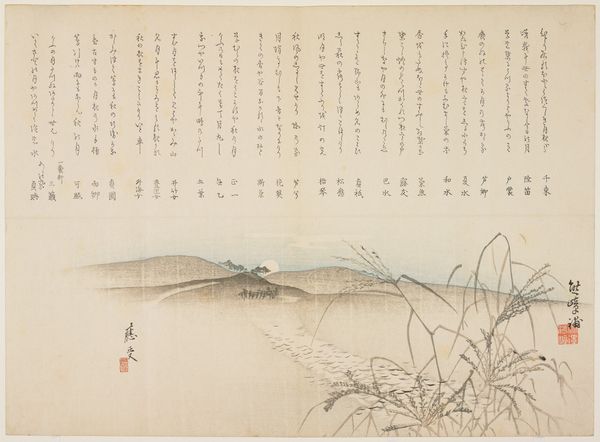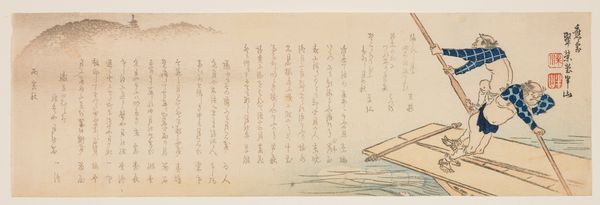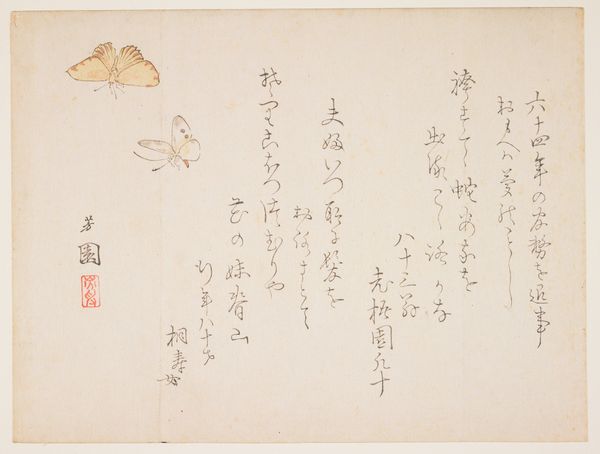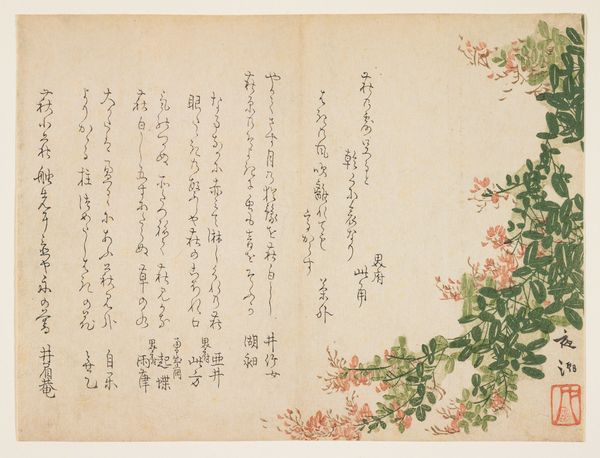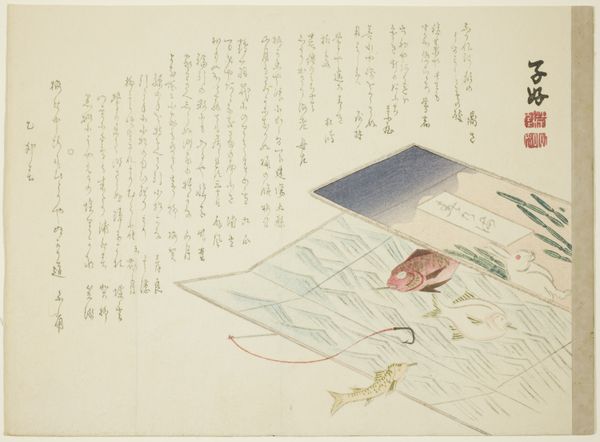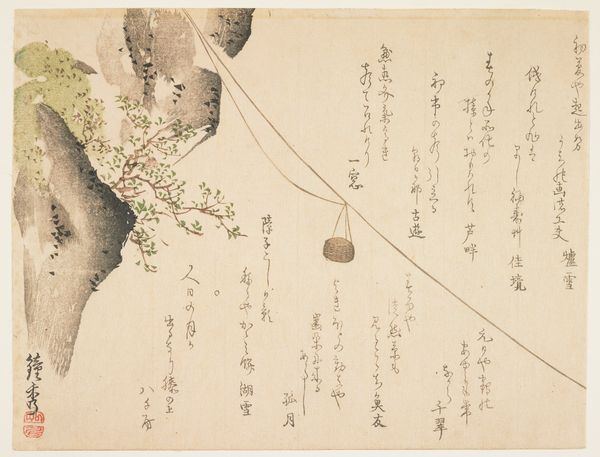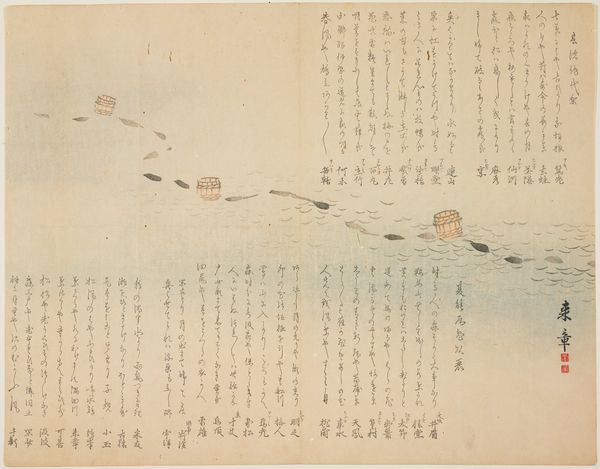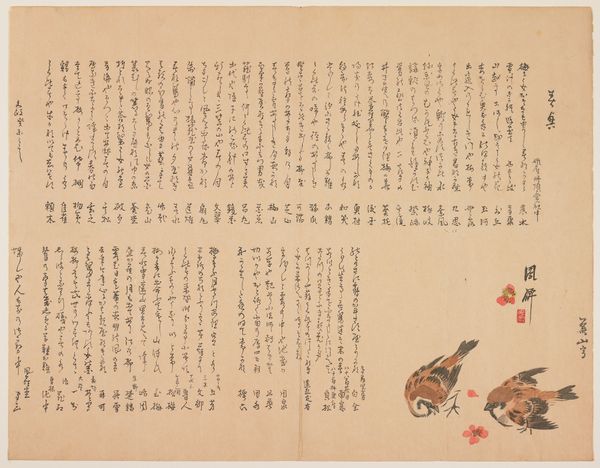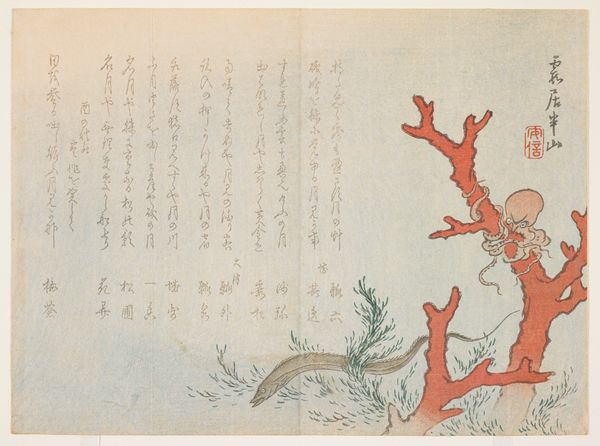
drawing, print, paper, watercolor, ink
#
drawing
#
water colours
# print
#
asian-art
#
landscape
#
ukiyo-e
#
paper
#
watercolor
#
ink
Dimensions: 7 5/16 x 9 7/8 in. (18.6 x 25.1 cm) (image, sheet)
Copyright: Public Domain
Curator: Looking at this, it feels like glimpsing a faded dream. I find myself drawn to its wistful quality, that hint of longing it seems to emanate. Editor: I’m interested in how your initial reaction to "(Bridge and tower)," a work made around the 19th century, perhaps reflects how its original audience perceived these types of images as part of everyday visual culture. The Ukiyo-e, specifically landscape prints were ubiquitous in Japan at this time. Curator: Yes, I think it’s also about the materiality of it. This particular print uses watercolor and ink on paper—creating that ephemeral effect. The bridge feels delicate, almost disappearing into the mist. Is this something common with landscape Ukiyo-e? Editor: Very astute observation, as such artistic compositions were quite stylized with great emphasis on certain subjects as the tower that is visible here, or other times Mount Fuji, elements in daily urban settings with carefully studied rendering methods. Think about the way that the social fabric of Japan depended so heavily on such physical structures as Bridges and even communication as such documents, their renderings held great importance as signifiers for their way of life. Curator: The handwritten annotations are so poetic. Although indecipherable to us, their arrangement around the bridge and tower amplifies that emotional response to me. A deep history behind those brushstrokes! Editor: They certainly act as narrative anchors that ground it more as documentation with artistic purpose—perhaps they help frame the artistic rendering. It feels incomplete without both aspects presented in such careful visual unison. Curator: Indeed! It reminds me that even in something seemingly straightforward, there's so much story held within the cultural and artistic practices around it. Editor: Precisely, the blending of print techniques like these are very intentional, for cultural representation with the hand-crafted component; an integration often forgotten by us modern audiences as we come to engage the works as stand-alone pieces now isolated in time from a context of communal activity and cultural dialogue. Curator: Well, that added depth makes it an enriching visual echo in our contemporary setting. Editor: Very well put! It's precisely that echo across centuries which is so fascinating.
Comments
No comments
Be the first to comment and join the conversation on the ultimate creative platform.
